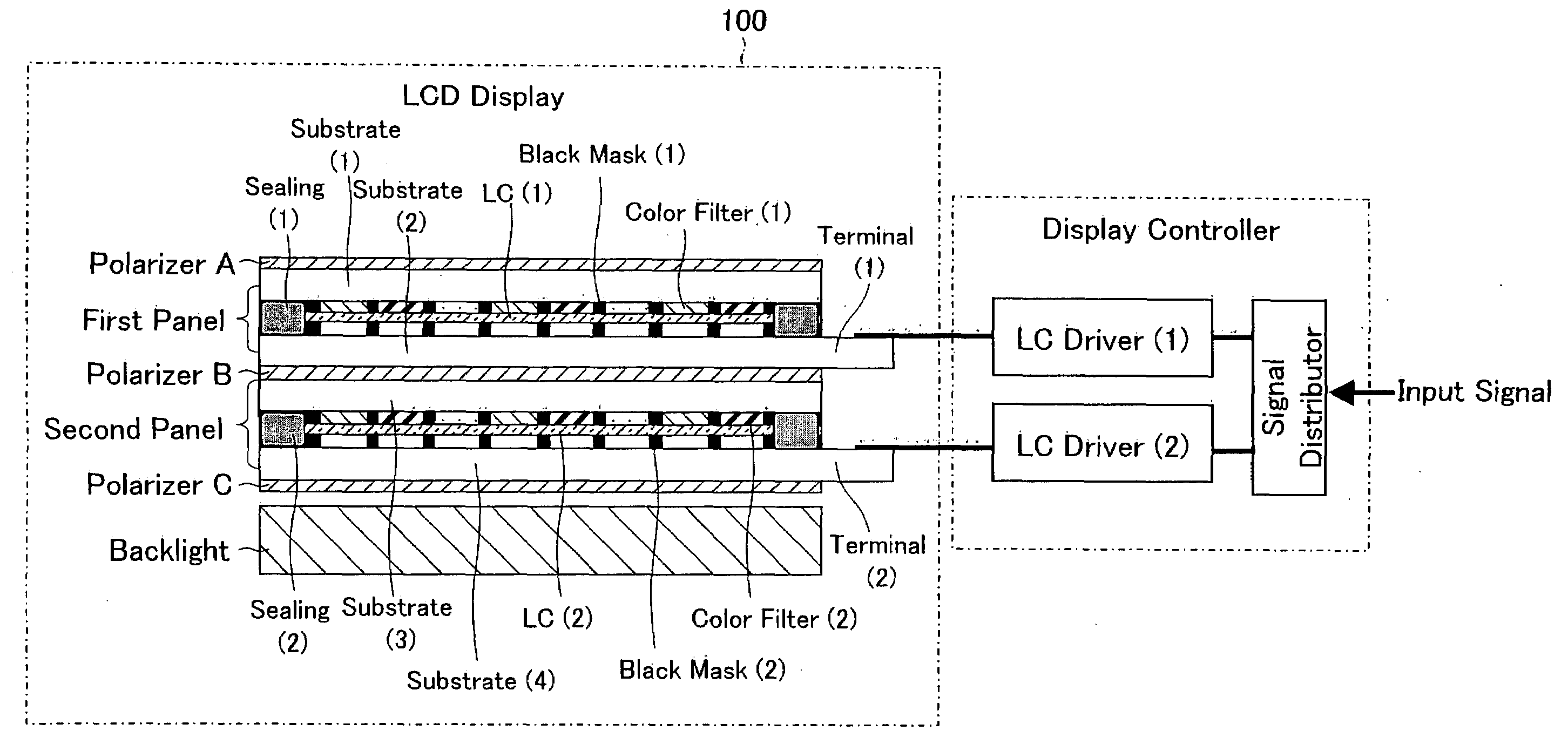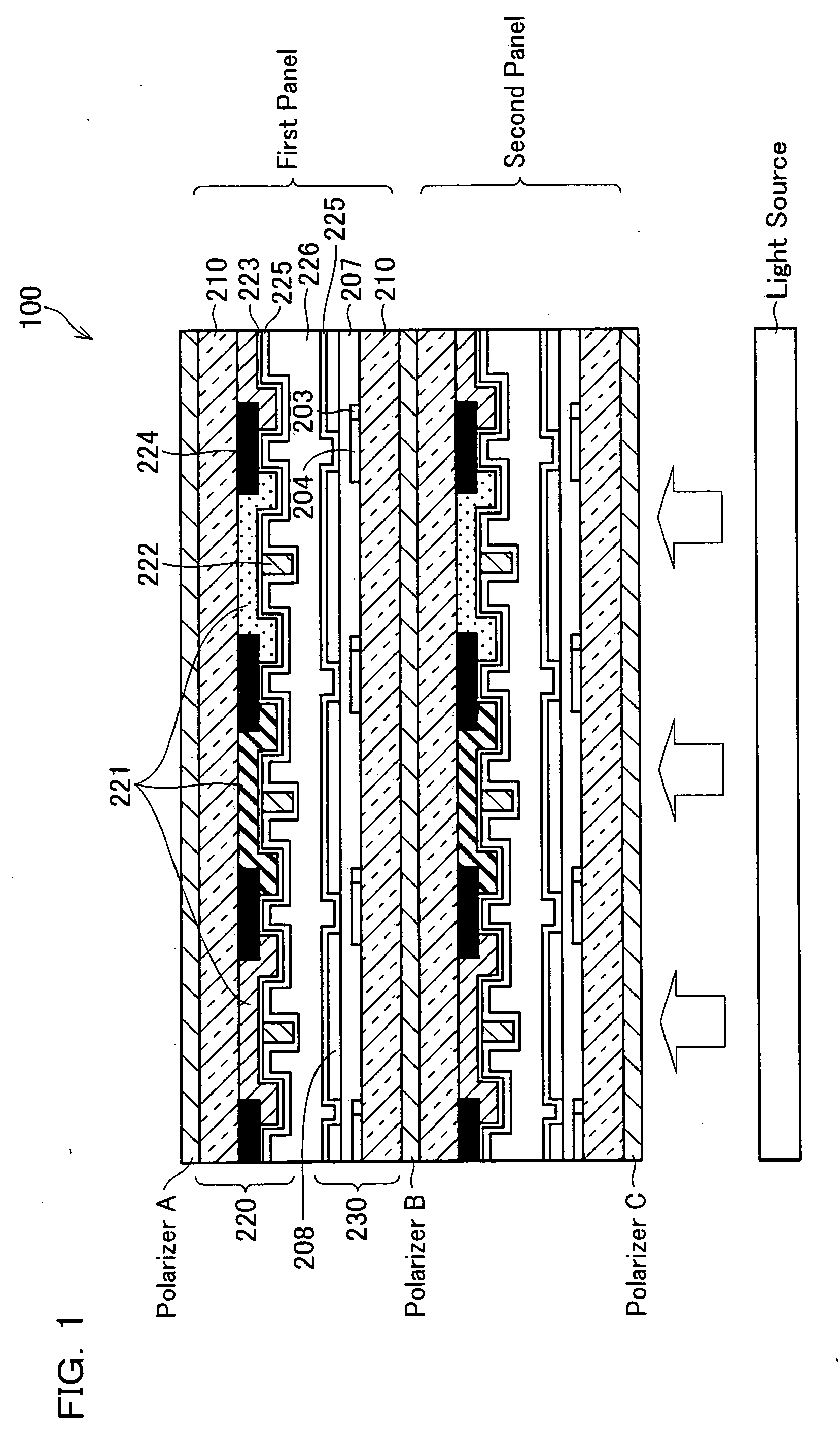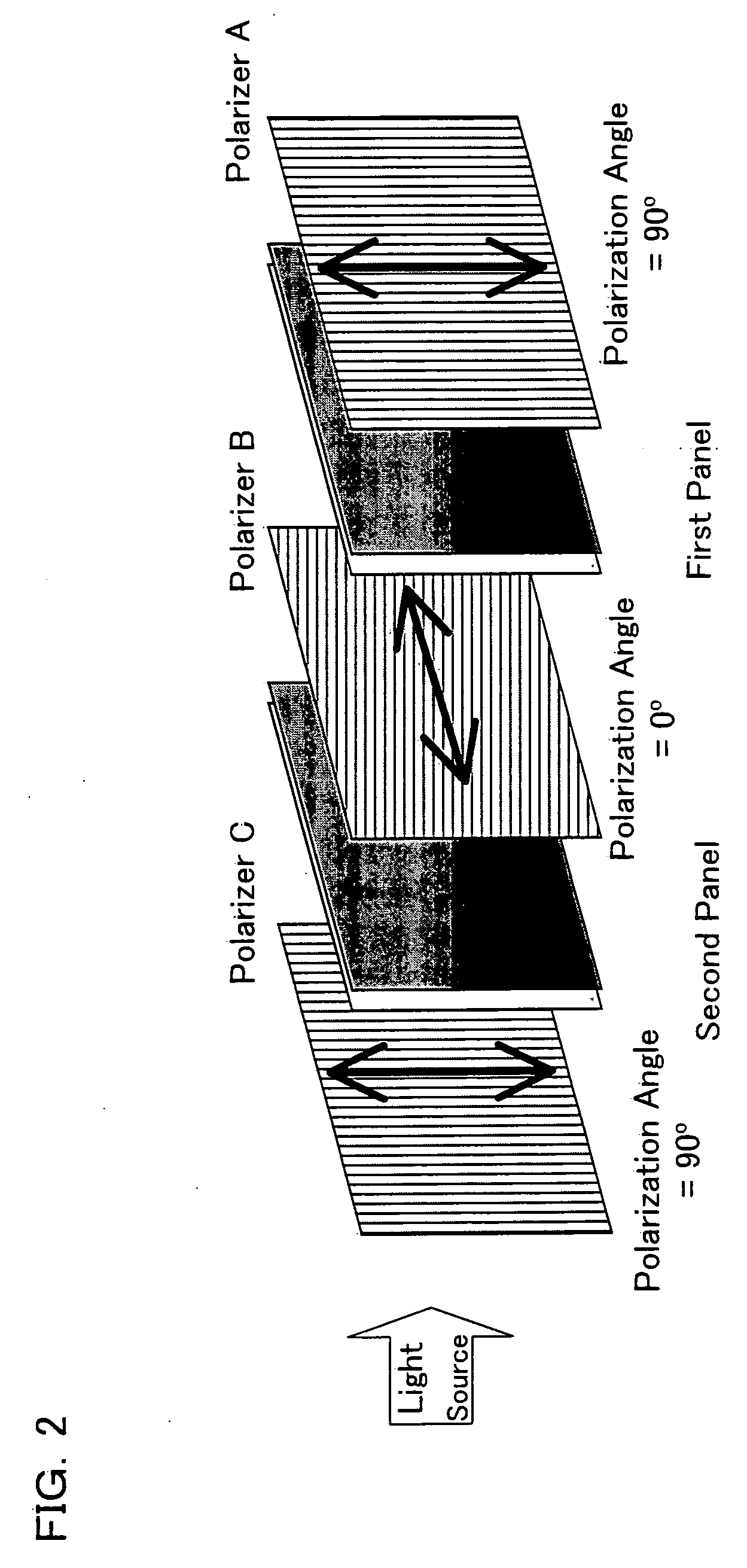Liquid Crystal Display Device Drive Method, Liquid Crystal Display Device, and Television Receiver
a technology of liquid crystal display device and drive method, which is applied in the direction of static indicating device, television system, instruments, etc., can solve the problems of poor response properties, poor reliability, and achieve the effect of preventing interference between liquid crystal panels, improving saturation reduction, and high display quality free from saturation reduction
- Summary
- Abstract
- Description
- Claims
- Application Information
AI Technical Summary
Benefits of technology
Problems solved by technology
Method used
Image
Examples
embodiment 1
[0230]The present embodiment will describe a drive signal processing algorithm for two stacked liquid crystal display panels which causes no saturation reduction or oblique image displacement. For the convenience of description, suppose that there are 5×5 pixels and also that the image area for smoothing (M×N pixels=3×3 pixels).
(1) Obtain the maximum value of the RGB signals for each dot from input signals. FIG. 17 shows the gray levels for the pixels obtained that way.
(2) Next, give a maximum value for 3×3 dots to the pixel at the center. FIG. 18 shows the resultant values. Give peripheral pixels the value of an adjacent pixel as shown in FIG. 19. Calculate an average value for 3×3 pixels from the resultant values shown in FIG. 19 and give the average value to the pixel at the center of the 3×3 pixels as shown in FIG. 20. Give peripheral pixels the value of an adjacent pixel as shown in FIG. 21.
(3) Divide the full gray level (255 for 8 bit signals) by the value of each pixel in FIG...
embodiment 2
[0235]A method will be described, as another embodiment of the present invention, which eases saturation reduction caused by the γ value for the image data outputs of the first and second panels. Suppose in the present example that the first panel is a color panel and the second panel is a black and white panel. The invention is however equally effective if both panels are color panels.
EXAMPLES OF THE INVENTION
[0236]The γ value for a display device is given by i=k×Êγ, where E is an input signal for a gray level, i is an output (luminance), and k is a constant. Therefore, log i=log k+γ·logE, and the γ value is the slope of a log·log graph.
[0237]Since γ for TV signals is specified to G=0.45, γ for display devices is typically Gout≈2.2. In practice, however, γ is rarely set to a constant value across the entire gray levels, but continuously varied from about 1.8 to about 2.6, in liquid crystal displays and other display devices due to black display where luminance is not zero and for ...
embodiment 3
[0266]The following will describe another embodiment of the present invention in reference to FIGS. 30 and 31. The first panel is liquid crystal panel A, and the second panel is liquid crystal panel B.
[0267]Two liquid crystal panels are stacked on top of one another for use as shown in FIG. 30(a). Assume that the resolution of liquid crystal panel B is lower than the resolution to be displayed.
[0268]Interference occurs between liquid crystal panel A and liquid crystal panel B because the liquid crystal panels contain fine pixels as shown in FIG. 30(b). The interference causes moire patterns.
[0269]Accordingly, the spatial frequency of the display data for liquid crystal panels A and B are changed as shown in FIG. 30(c) so as to eliminate interference between liquid crystal panels A and B. That reduces moire patterns caused by the interference.
[0270]The control shown in FIG. 30(c) is implemented as follows.
(1) Convert input data to spectral data through DCT, FFT, etc.
(2) Divide into l...
PUM
 Login to View More
Login to View More Abstract
Description
Claims
Application Information
 Login to View More
Login to View More - R&D
- Intellectual Property
- Life Sciences
- Materials
- Tech Scout
- Unparalleled Data Quality
- Higher Quality Content
- 60% Fewer Hallucinations
Browse by: Latest US Patents, China's latest patents, Technical Efficacy Thesaurus, Application Domain, Technology Topic, Popular Technical Reports.
© 2025 PatSnap. All rights reserved.Legal|Privacy policy|Modern Slavery Act Transparency Statement|Sitemap|About US| Contact US: help@patsnap.com



